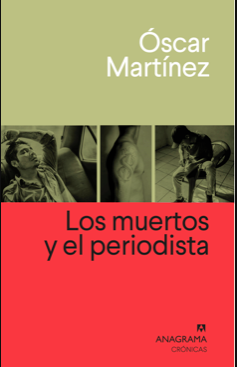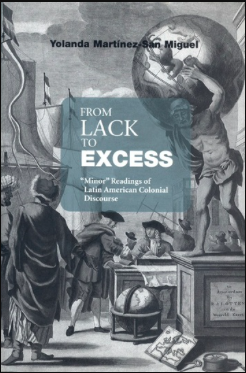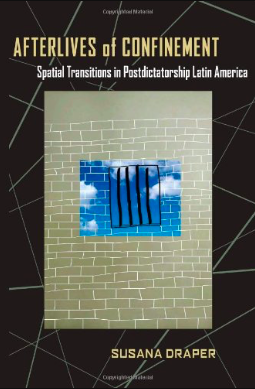More (disorganized) notes (and some comments to the process of writing)
———
Accumulation(s) IIII
These entries have been very messy. Yet, I do believe it is becoming clearer where I want to get with all this (or at least, I have that small certainty…)
1. With the first post I tried to open a possibility of rethinking the relationship between history, politics and literature in Latin America and its “integration” into capitalism as an economic system. This, of course, is nothing new, many have formulated this (I don’t know any names in particular. I can think about the “Feudalism and Capitalism in Latin America” by Ernesto Laclau [an article in which Laclau discusses some ideas about Andrew Gunder Frank, who believed that Latin America triggered capitalist expansion and rule in the years to come. Consequently, L.A was/is a place where the passage from capitalism to socialism is possible without mediation. While Laclau criticizes Frank very wide idea of capitalism, he also recognizes that some of what Frank says is right. Here, perhaps, the departing point from where Laclau will later formulate his further thoughts about radical democracy]). My purpose with the first post was to show how similar (somehow) the idea of the literary “Boom”, from the mid 20th century, is to the Chronicles of Indies. I see the Chronicles of Indies as texts that mix testimony, fiction, non-fiction and also some figures that could be closer to “modern” ideas of the literary. In a way, many other “medieval” texts —as many medievalists would argue (specially texts about mystics)— have already mixed testimony with “fiction”, storytelling and “high arts” (namely poetry, and so on). However, the Chronicles of Indies were the first ones to spread efficiently, motivate other “writers” (explorers, lettered conquerors, or anyone that could go in a ship to the “new land”) and also open the possibility for the writing of “fantasy”. In a way, then, the further Boom and later the so-called post-boom is a repetition of that initial “literary movement”.
With this first post, I also was trying to formulate a concept (not that I achieved it, far from it) —namely, accumulation— that could connect the literary, the historical, and (somehow) politics. Departing from Marx’s famous “so-called” primitive accumulation, I suggest that what is at stake in any process of accumulation is the (necessary) production of systematic violence that changes the pattern of “cumulation”. That is, that “accumulation” is a process of ordering, changing, transforming and creating second nature: only after terror can bodies be reordered via habits (this is, I believe, close to what Jon Beasley-Murray’s posthegemony theory argues). From this perspective, capitalism always requires, as John Kraniauskas suggests, a process of so-called primitive accumulation. The thing is that, or at least from our current situation, things have changed, not for much, but the small changes in the last 30-40 years have reached a point where what is (was) accumulated cannot be perpetuated in a single regime. There is, overall, uncertainty. Now we see that what was accumulated (pollution for instance) is in “una ofensiva de lo sensible” as Diego Stzulwark argues.
The first post is very limited. But I think it opens some minimal possibilities. There is, I think, a connection with the third post: if stories have, in a way, displaced history, wouldn’t it be because our ways of historizing, and of writing stories have been “novellized”?
2. The second post tries to connect some of the ideas of the first post with, more or less, a specific context. What can be said about the way fiction is currently being written? As I tried to show, while it might be said that fiction these days is merely “itemising” the aesthetic, the thing is that “itemising”, as a narrative process/figure, is showing something that comes “naturaly” when producing a work of “fiction”, or writing in general. It isn’t that works like Luiselli’s or Knausgard’s are merely exposing the “phantom threads” that support the whole process of writing (we could say that this is the purpose of Marx after he formulates the process of “so-called” primitive accumulation and then comments the bloody legislations and so on), but that their “itemisation” is an attempt to count (to tell) without accumulating, that is to prepare the terrain for a line of flight, or to simply trigger it.
What interests me, then, are works of writing (fiction) that exhibit the process of writing as “accumulation” while also they attempt to suspend and/or trigger a line of flight. These works, as I later tried to suggest in the third post, would be connected to the way certain things “crack-up”. I aim to work with “authors” like Reinaldo Arenas, Burgos-Menchú and Moya (here it becomes very obvious that I have a problem with temporalization); Roberto Bolaño [not sure about this one] and Mario Levrero (the space trilogy and La novela luminosa); and César Aira and Valeria Luselli. My intention is to divide the thesis in three. The first part would be dedicated to Arenas and “testimonio” / Menchú-Moya; the second part would be an intermezzo with Bolaño and Levrero, and the third one would be dedicated to Aira and Luiselli.
This division is motivated by my intention to “connect” works of fiction and “critique” to history and the political. The first part of the project would be guided by the Fitzgeraldian question, “how things came to be like this?”. The third part by the Leninist one, “what is to be done?”. What I pursue with these questions is not to propose a contradiction between them. My intention is neither to show how these two perspectives are to a certain extend closer to each other, as Erin Graff Zivin has pointed out about the “tragic” and “utopian” political left perspectives (Anarchaeologies 31-32), but to point out that these two questions (the Fitzgeraldian and the Leninist one) are part of an assemblage that opens and closes possibilities for the left. These two questions are part of an abstract machine. The intermezzo, in the other hand, seeks for both the suspension and the possibility of a line of flight. Bolaño and Levrero recount the possibility of the machine to move on.
(This section —from this post— is very loose and not very specific)
3. With the third post, I tried to connect the first and the second post’s ideas about history and the “literary”. At the same time, I tried to question what is really at stake with “stories”. That is, if the “novellation” of history and of the novel has somehow “mixed and confused” perceptions, what place do stories hold? The question (problem?) of stories is not about differentiating truth from lies. But it is true that fiction is close to lies and once we hear enough lies, we are closer of not recognizing truth at all but still able to enjoy fiction. At the same time if we cannot stop narrativization (fiction, good or bad) or lying in general, what can we do with lies, errors, mistakes, evil? What is to be done? How things have become to be like this without us knowing it? When did we crack-up? All this questions of course demand a political (Lenin) and a pre-political (Fitzgerald) stand. Clearly, stories share things with lies, (errors and so on). But there is also the chance that both stories (and lies too) could open and call for the exodus, to abandon even the hope of truth and content ourselves instead with stories (?) —or better to escape while also adding.
At the end of the third post, I suggested (poorly and confusing [but I think I want to save some of these ideas] that “stories” have a way of “adding”, counting (as EGZ recalls from Rancière). This process of “addition” is similar, or close, to what happens to an addict, a body that persists but is unstable and destabilizing but stable in his repetition of habits. Addiction is, then, a way of hanging to being, but also a path without clear ending, a brief line of flight. I would like to argue that there is a thread that connects Arenas and Luiselli (passing through testimonio [Menchú, Moya], Bolaño and Levrero and Aira).
(This is too vague, I know)
Comments:
-It is all too general, and I might be a little lost. At the same time, I think the idea of accumulation could be very productive. Specially if I start developing it more. I would like to work with 3 (ar least) different ways that accumulation happens: in capitalism (addition by subtraction [a.k.a accumulation by dispossession]); as addiction; and then as addition [a form of accelerationism (?).
-I have a (severe) problem with temporalization. Two posts dwell in “colonial” times. I need to work on this.
-I need to connect the dots with the intended authors that I would like to work with. I also need to clarify the connection between history, literature and politics.
-Something I’ve been thinking about and, so far, I merely named in the posts, is the idea of literature as a sphere a la Sloterdijk. I think this is an interesting idea, but I haven’t developed it more.









